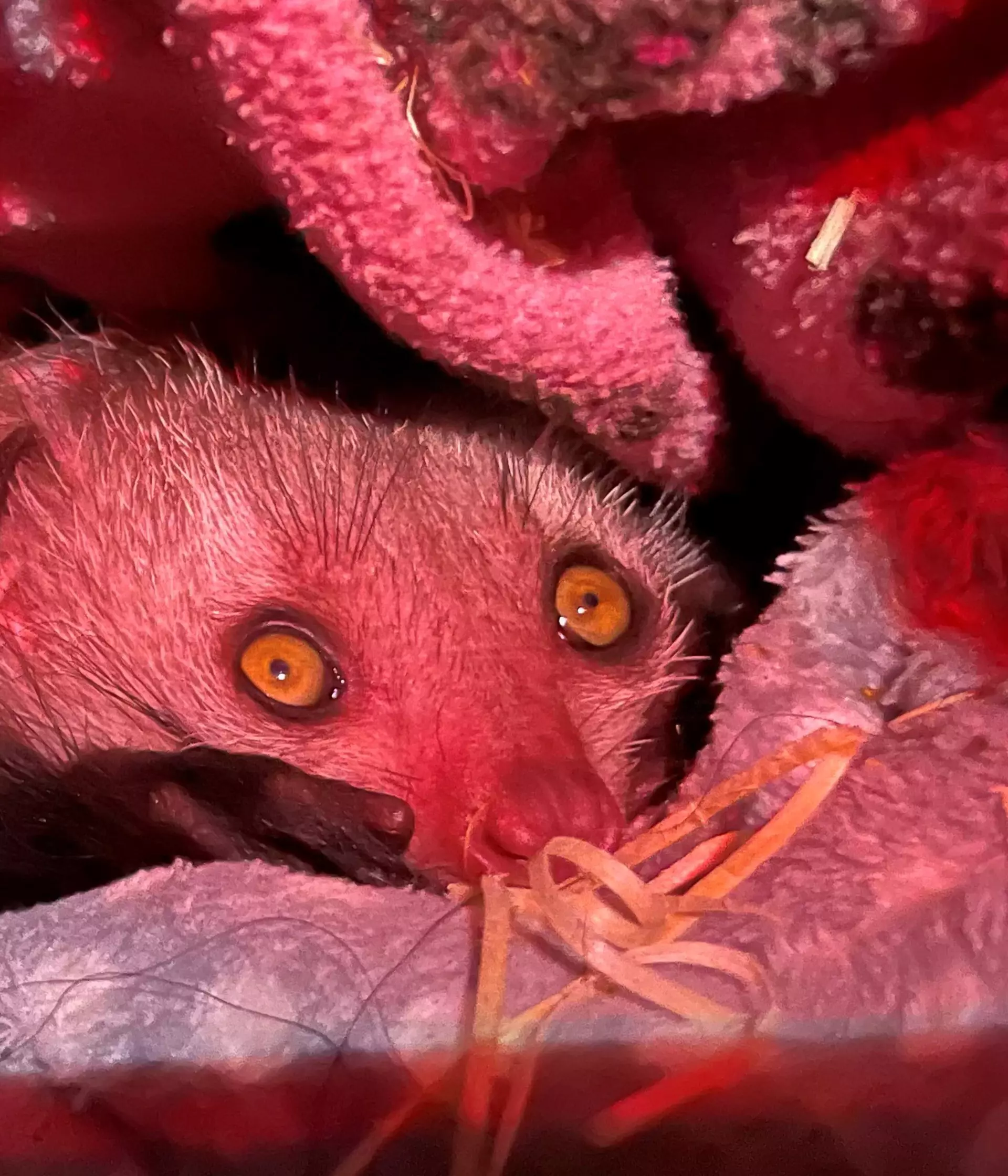An elusive baby aye aye born at ZSL London Zoo in May has finally made an appearance for patient zookeepers - after spending its first few months tucked away in a nest box being cared for by mum, Sally.
The Endangered lemur - only the second ever to be born at the conservation zoo - arrived on Wednesday 19 May, with zookeepers only catching fleeting glimpses of the yellow-eyed primate until this week.
Zookeeper Tegan McPhail said: “Sally has been taking excellent care of her little one, and while we’ve seen the baby briefly, this was the first time it ventured out of its cosy den for long enough for us to take a quick pic.
“With their luminous yellow eyes and long crooked fingers, aye ayes are definitely unique looking; you could hardly call them photogenic but there's quite literally no other animal like them on earth.”
Aye ayes are the world's only nocturnal lemur
The world’s only nocturnal lemur, aye ayes (Daubentonia madagascariensis) have traditionally been persecuted for their unusual appearance and are considered a harbinger of doom in their native Madagascar - where legend has it that if an aye-aye points its long finger at you, death is not far away.
In reality however, the rarely seen primate uses its elongated digit to forage for tasty beetle larvae from inside trees.
Aye ayes are ranked No16 on international conservation charity ZSL’s EDGE of Existence list of threatened mammals, which puts unique and threatened species at the forefront of conservation attention.
“An EDGE species is one that is Evolutionarily Distinct and Globally Endangered, meaning that they have few - if any - close relatives in the tree of life,” says Tegan. “They’re often unusual in appearance and have uniquely evolved traits - and are an irreplaceable part of the world’s evolutionary heritage.”
A vital addition to the European breeding programme for the Endangered species
The team won’t know the sex of the youngster until its first health check, which will take place once the little one is a little more confident exploring outside of the nestbox: boy or girl, the little one is a vital addition to the European breeding programme for the Endangered species, which is currently threatened by deforestation pressures.
While the as yet unnamed newcomer is still settling in behind the scenes at the Zoo, visitors can see other incredible EDGE species during a trip this summer – including Chinese giant salamanders, big-headed turtles, pygmy hippos, western lowland gorillas and Bactrian camels.
